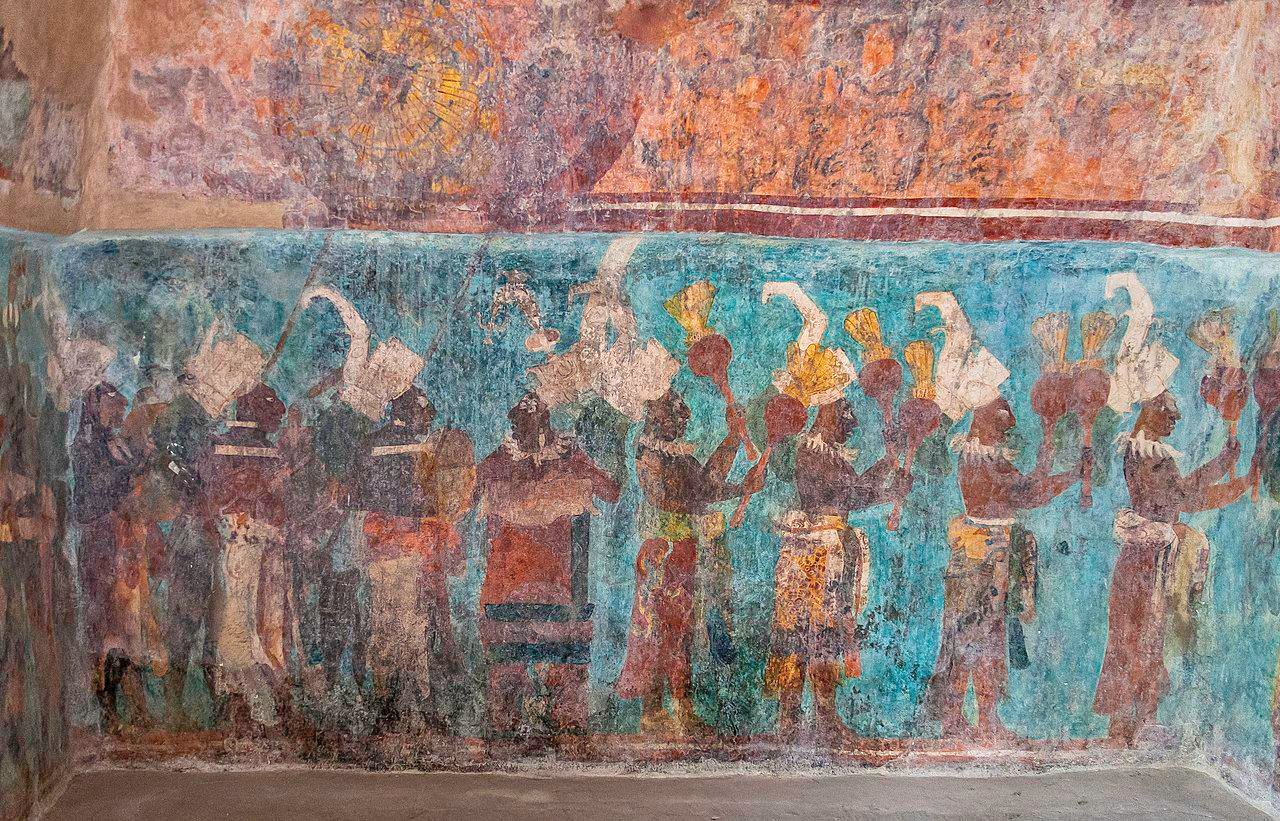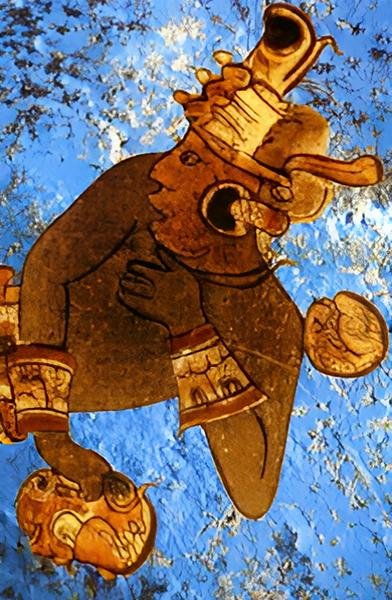An amazing new find is expanding our understanding of Maya Blue—one of the most enigmatic and enduring pigments of the ancient world. Dean E. Arnold, adjunct curator of anthropology at the Field Museum of Natural History in Chicago and professor emeritus at Wheaton College, has found a second ancient method of producing the pigment, gaining new insights into Maya technology, spirituality, and artistry.
 A mural in Bonampak, Mexico, features a background painted with Maya Blue. Credit: Ricardo David Sánchez, CC BY-SA 3.0
A mural in Bonampak, Mexico, features a background painted with Maya Blue. Credit: Ricardo David Sánchez, CC BY-SA 3.0
Initially identified by modern researchers in 1931 at Chichén Itzá, Maya Blue is an uncommon hybrid pigment made of organic indigo pigment and the inorganic clay mineral palygorskite. Its vivid color is often described as comparable to the Caribbean Sea or the bright blue sky over the Yucatán Peninsula. Unlike traditional indigo, which faded with age and exposure in old times, Maya Blue resists alkalines, acids, and even tropical humidity. Some of the samples remain stuck to stone carvings at Chichén Itzá today—unfaded after more than a thousand years of enduring hurricanes and jungle heat.
Scientists were stumped for decades on how to make Maya Blue exactly. In 2008, Arnold and his team proposed a breakthrough. Analyzing pigment remains on ceramics from one of Chichén Itzá’s wells, they discovered that the Maya artisans heated a mixture of indigo, palygorskite, and the ceremonial tree resin copal over fire. This process fused the elements together into a long-lasting blue pigment. The discovery, widely reported at the time, appeared to crack an enduring enigma that had taken decades.
 A warrior with Azul Maya on the background. Credit: Constantino Reyes, Public domain
A warrior with Azul Maya on the background. Credit: Constantino Reyes, Public domain
But now, Arnold has found yet another method the ancient Maya used to produce the pigment—without copal. At the annual meeting of the Society for American Archaeology in Denver on April 25, he presented findings from a detailed analysis of twelve bowls excavated at Chichén Itzá. Microscopically examined, the bowls were found to have been heated and to contain burnt plant stems and palygorskite residues. These residues, Arnold reports, show that Maya potters ground the clay mineral while it was wet and blended it with indigo, firing the combination from below—a technique entirely different from the previously known method.
“Consequently, the observations of these bowls provide evidence that the ancient Maya used this method as a second way to create Maya Blue,” Arnold said in his presentation.
The new find provides an added layer to the rich cultural history of the pigment. Used at least as early as 300 BCE up until the colonial period, Maya Blue did more than decorate. It coated pots, murals, sculptures, and even humans in the case of human sacrifice, often in rituals dedicated to Chaak, the rain god of the Maya. Arnold suggested that, in sacrificial rituals, the bowls in which the pigment was kept could symbolize vessels of the god Chaak himself.
 Maya blue used in the Florentine Codex fol. 227v. Credit: Gary Francisco Keller, artwork created under supervision of Bernardino de Sahagún between 1540 and 1585, CC BY 3.0
Maya blue used in the Florentine Codex fol. 227v. Credit: Gary Francisco Keller, artwork created under supervision of Bernardino de Sahagún between 1540 and 1585, CC BY 3.0
In his published book Maya Blue (University Press of Colorado, 2024), Arnold traces nearly a century of research on this pigment. He combines archaeological, chemical, ethnographic, and material science studies, while also weaving in personal anecdotes from his four decades of fieldwork. The book is being hailed as the most comprehensive account to date, presenting testable hypotheses about how Maya Blue was produced and how the technology spread across Mesoamerica.
Despite the advancements, the full story of Maya Blue remains untold. Arnold looks forward to further research to discover the specific plant used in the second method, extending centuries of attempts to identify the mystery behind this unusually enduring color of the ancient Maya.





